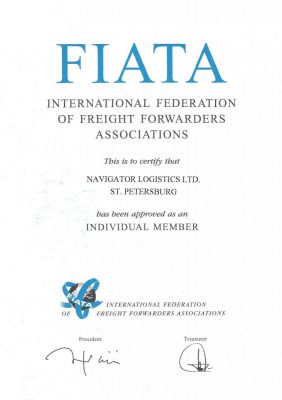 Among task solutions for increasing of speed, reliability and efficiency of international transport an important role is given to the unification of goods.
Among task solutions for increasing of speed, reliability and efficiency of international transport an important role is given to the unification of goods.
It is achieved by:
- combining small packages to a size that allows the use of mechanized, automated or automatic loading and unloading equipment;
- use of containers with dimensions that are standard in all countries – participants of transportation;
- using special unified transport (for example, trailers) or transport intended for transportation of standard containers (railway platforms for containers)
The main means of cargo unification today are pallets, containers and trailers.
Small packages of cargo are combined on a pallet into a unified block, fixed with the help of wide metal or plastic tapes, or placed in a fiberboard container with its fastening with steel tape, or covered directly on the pallet with a shrink plastic sheath. These measures, on the one hand, reduce the risk of loss or theft of individual packages of goods, and on the other, they allow the goods to be loaded and unloaded with a standard forklift rather than transferring small packages manually.
There are several basic standard pallet sizes:
- railway pallet (800×1200),
- “Euro pallets” (800×1200),
- ISO recommended sea pallet (1000×1200) and
- sea container pallet used in Japan and Australia (1100×1100).
Unfortunately, you can still encounter the use of pallets that do not meet international standards.
So often the pallets arriving with cargo from China cannot be unloaded with a standard loader. It is impossible to use them in the future – when sending for export goods from Russia.
The main standard container sizes recommended by ISO are:
- 20-foot (6.1 m long, holds 11 Euro pallets) and
- 40-foot (length 12.2 m, can hold 22 Euro pallets).
About 85% of the entire global fleet is made up of standard dry cargo containers. In the USA, containers of standard length are also used, but with a height increased from standard 2.4 m to 2.9 m. And only 2% of containers in the world have a length not equal to 6.1 or 12.2 m (for example, 10- feet – 3.05 m long).
Container transportations serve a significant number of cargo going for export to China – unlike the case of pallets – for international shipments it uses mostly unified containers, which greatly facilitates the organization of trade between our countries.
In the field of international road transport goods are unified with the use of trailers of two main sizes.
- Trailers with a body length of 14.6 m are equivalent to “wagon” shipment and easily allow calculation of the required amount of transport when repacking cargo from the railway trains to vehicle serials.
- Trailers with a body length of 8.5 m are used for small freight transport.
Since the smaller size of the trailer reduces the number of intermediate sorting in the warehouses of freight forwarders, then and the time of picking the goods, sufficient to fill the volume of the body, is significantly reduced.
Using of locked and securely sealed containers or trailers as a unified means of transportation significantly reduces the likelihood of minor theft of cargo during its transportation. Reliable care of the container or trailer (that excludes their serious defects or damage to lockers) and careful attention to sealing – is the key to the safety of your goods.
LLC “Navigator logistic” will never offer clients the defective or damaged container or the trailer. All means of cargo unification used by us comply with international standards and world practice of transportation. This means that your cargo will always be delivered safely and on time.
